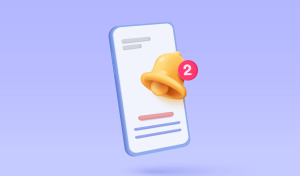Whether you’re a developer, writer, photographer, or designer, your portfolio is your first impression. It’s not just a collection of past projects – it’s your introduction, your chance to make a good impression. The design of your portfolio says a lot about you, even before people read a single word of your work. That’s why choosing the right template for your portfolio should be a strategic decision. good template doesn’t just draw attention to what you’re doing. It makes it easy for people to find out who you are, what you offer, and why they should care. Sites like templifica.com , facilitate this work by providing modern, elegant templates designed with their functionality and simplicity in mind. But which ones stand out from everything on the market?
Here we present the best portfolio templates that are worth your time — each one is useful in its own way, depending on your style, goals, and niche.
-
1. Simplicity and minimalism for maximum concentration
Minimalistic templates bring your work to the fore. They eliminate distractions, reduce clutter, and allow your portfolio to breathe. This aesthetic is especially suitable for photographers, illustrators, or visual designers who want their visuals to speak for themselves without interference.
Look for patterns that:
- Use spaces liberally
- Limit the number of font styles to one or two
- Make navigation intuitive and simple.
- These templates don’t pretend to be flashy — they allow your content to do its job.
The best choice: a template with a centered grid of images, a muted color palette, and a fixed navigation bar that doesn’t attract attention. Think about having more signal, less noise.
-
2. Editorial atmosphere for story-based creatives.
It is usually difficult for authors, content strategists, and journalists to find templates that differ from sketches. If your work has a lot of words, choose a portfolio that is more in line with the aesthetics of a digital magazine.
What makes an editorial template effective?:
- Good typography
- There is enough space for excerpts and article-style formatting.
- The ability to mix multimedia (text, audio, images)
- This layout allows you to describe the story behind the work, rather than just show the end result.
The best choice: a grid that translates into a full-page breakdown of the project, with large serif fonts, large line spacing and thoughtful transitions.
-
3. Scroll-based portfolio for visual effect.
Some projects require movement. Scrolling effects and parallax design can add depth to your presentation without weighing it down. A well—executed design creates an immersive effect – ideal for UX/user interface designers or animation graphics.
What to pay attention to:
- Responsive design that won’t break on mobile devices
- Animation that enhances the content, but does not overload it.
- Fast loading time (templates overloaded by scrolling may be overloaded)
The best choice: A template with vertical scrolling, multi-level visual effects, fixed sections and thoughtful animations.
-
4. Modular grids for versatile creatives.
If your work covers several categories (branding, web design, product packaging, etc.), a modular grid will help you display the product range without distinguishing it from the general mass. These templates are flexible and often allow you to classify or filter work.
Search functions:
- Tag-based navigation
- Dynamic sorting
- Uniform size of the thumb nails
In this template, everything is organized without sacrificing diversity.
Best recommendation: A portfolio template with filterable tags at the top and grid blocks that give access to case studies or galleries.
-
5. Bold and corporate identity to add personality
If you are creating a portfolio that will become your personal brand, choose a more customized template. Bold color schemes, playful micro-interactions, or custom fonts will make your website more memorable — if, of course, there is still room for ease of reading and organization.
Tips:
- Choose a template that supports custom fonts and color schemes.
- Make sure that the template does not limit the customization options (you need flexibility)
- Don’t overload the design – bold font doesn’t necessarily mean “busy”.
The best choice: a section about heroes with a statement title, navigation on the sidebar and a place for personal announcements or reviews.
-
final thoughts
When it comes to a portfolio, there is no one-size-fits-all option- and that’s a good thing. Your work deserves a format that suits it perfectly. Whether you’re a minimalist, storyteller, or a mix of styles, the best portfolio templates serve one purpose: to instantly highlight your value.
When choosing, consider the following:
- Is this template suitable for the job I want to be hired to do?
- Can I upgrade and maintain it quickly without any problems?
- Will it look good on mobile devices, tablets, and desktops?
- If so, then you are moving in the right direction.
Templates are not just design shells, they are framing devices. And because there are so many thoughtful, well-thought-out options available (especially on specialized sites like templifica.com ), there is no reason to stop at something universal. Choose the one that suits you best and make it your own.
Your portfolio isn’t just about what you’ve done. This is what you strive for in the future. Make sure that everything is visible in it.






More Stories
How to Supercharge Your Campaigns with Push Traffic: A Deep Dive Into Push Notification Ads
What quality options are available for a pinterest video downloader?
SolidWorks vs. Other CAD Software: Why Buying SolidWorks Is Worth It